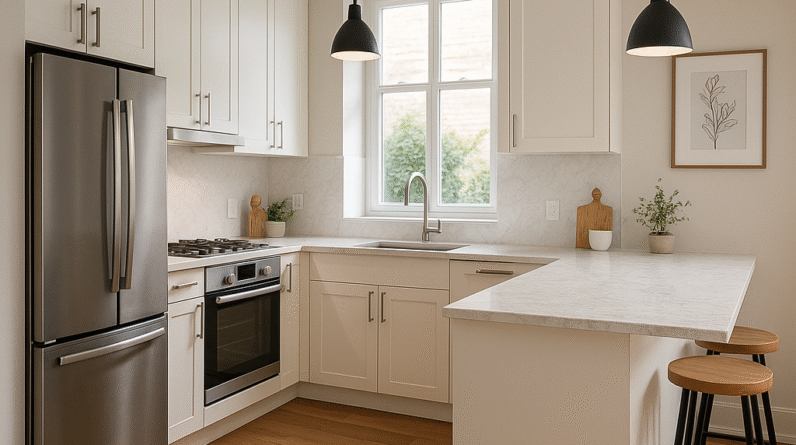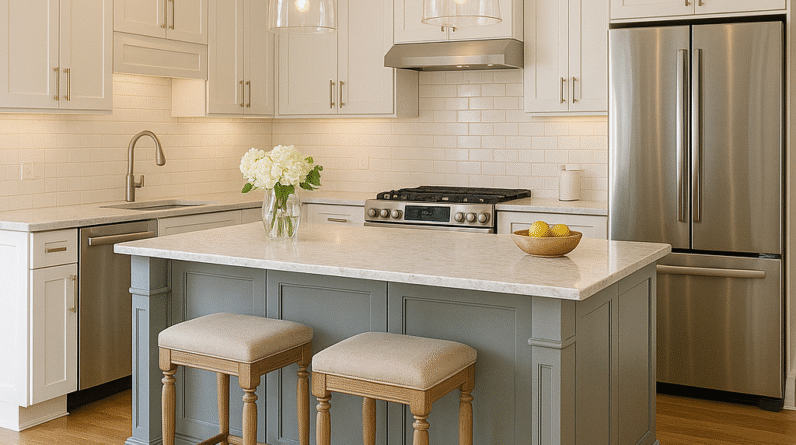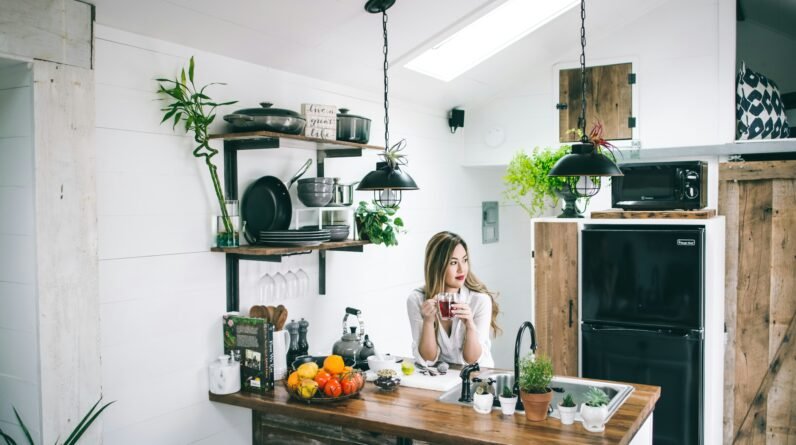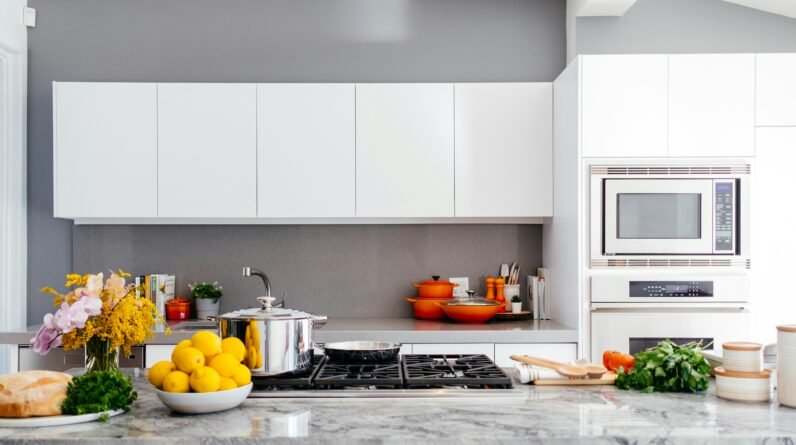
What Costs The Most In A Kitchen?
What Costs The Most In A Kitchen? Imagine stepping into your dream kitchen, envisioning all the delicious meals you’ll create and the memories you’ll make. But before you embark on this culinary journey, have you ever wondered what actually costs the most in a kitchen? While some might assume it’s glamorous appliances or high-end finishes, the truth may surprise you. In fact, it’s the humble cabinets that often take up the biggest chunk of your kitchen budget. So, let’s unlock the secret behind these seemingly unassuming storage spaces and uncover why they can be the priciest feature in your kitchen.
Cabinets and Countertops
When it comes to kitchen renovations, cabinets and countertops play a crucial role in both aesthetics and functionality. Custom cabinets are a popular choice for homeowners who want their kitchen to be unique and tailored to their needs. These cabinets are designed and built specifically for your kitchen space, ensuring a perfect fit and maximum storage capacity. While custom cabinets may have a higher price tag compared to pre-made options, they offer a range of customization options such as different woods, finishes, and hardware, allowing you to create a truly personalized kitchen.
While cabinets provide storage and organization, countertops are an essential surface for food preparation. High-end countertops are a fantastic way to elevate the look of your kitchen and add a touch of luxury. Materials like granite, marble, quartz, and even butcher block are popular choices for countertops due to their durability and visual appeal. High-end countertops often require professional installation to ensure precise measuring and perfect installation.
Appliances
No kitchen is complete without functional and stylish appliances. When it comes to appliances, it’s important to consider your specific needs, cooking habits, and overall design aesthetic. The refrigerator is the centerpiece of the kitchen and a major investment. Modern refrigerators come in various sizes, styles, and features, such as French doors, smart technology, and energy-efficient options.
Cooktops and ovens are another essential component of any kitchen. From gas to electric to induction, cooktops offer different cooking methods, each with its own advantages. Ovens, on the other hand, come in different styles, including single and double ovens, and can be built-in or freestanding to suit your space and cooking needs.
A dishwasher is a time-saving appliance that helps to keep your kitchen clean and organized. Look for models with multiple wash cycles, adjustable racks, and energy-efficient features to save on both water and energy bills. Range hoods are another important appliance, as they help to remove odors, smoke, and grease from your kitchen during cooking. Choose a range hood that complements your design style while effectively ventilating the space.
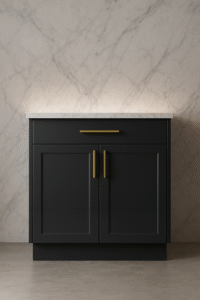
Flooring
Flooring sets the foundation for your kitchen and needs to be both aesthetically pleasing and durable. Hardwood floors are a classic choice that adds warmth and elegance to any kitchen. They withstand the test of time and can be refinished to maintain their beauty. However, hardwood floors can be susceptible to scratches and water damage, so it’s essential to take extra care and use protective measures.
Ceramic or porcelain tiles are an excellent alternative to hardwood and are known for their durability and easy maintenance. They come in a wide range of colors, patterns, and finishes, allowing you to achieve the desired look for your kitchen. Additionally, tiles are moisture-resistant, making them suitable for high-traffic areas, such as kitchens.
Lighting
Proper lighting is essential in the kitchen to ensure functionality, safety, and ambiance. Recessed lighting is a popular choice as it provides even illumination throughout the space. It can be installed in various configurations, such as in rows or grids, and can be adjusted to highlight specific areas of the kitchen.
Pendant lights are not only a great source of task lighting but also add a decorative element to your kitchen. They can be used above islands, dining areas, or as a focal point in the room. Pendant lights come in a wide range of styles, from modern to traditional, allowing you to find the perfect fit for your kitchen’s design.
Under cabinet lighting is a functional and stylish addition to any kitchen. It illuminates the countertop workspace and adds a warm, inviting glow in the evening. LED strips or puck lights are commonly used for under cabinet lighting, providing energy-efficient options that are long-lasting and easy to install.
Plumbing fixtures are not only essential for water supply and drainage but also contribute to the overall aesthetics of your kitchen. The sink is a critical element, and there are endless options to choose from, including stainless steel, granite composite, cast iron, and more. Consider factors such as size, shape, depth, and number of bowls to select the sink that suits your needs.
The faucet is another key plumbing fixture that can make a statement in your kitchen. Choose a style and finish that complements your overall design, and consider features such as pull-out sprayers or touchless technology for added convenience.
A garbage disposal is a valuable addition to any kitchen, reducing food waste and eliminating unpleasant odors. Ensure that your plumbing system is compatible with a garbage disposal, and choose a model with sufficient horsepower to handle your waste disposal needs effectively.

Backsplash
A backsplash not only protects your kitchen walls from stains and moisture but also adds a decorative element to the space. Tile backsplashes are a popular choice as they come in a variety of colors, shapes, and patterns, allowing you to create a unique design. Ceramic, porcelain, and glass tiles are commonly used for backsplashes due to their durability and easy maintenance.
Glass backsplashes are a modern and sleek option that can make a bold statement in your kitchen. They are available in a wide range of colors and finishes, providing a touch of sophistication and visual interest. Glass backsplashes are easy to clean and can reflect light to make your kitchen appear brighter and more spacious.
Proper ventilation is crucial in the kitchen to remove cooking odors, smoke, and excess moisture. A range hood helps to circulate the air and prevent the buildup of grease and contaminants in your kitchen. Choose a range hood that matches your design style while providing efficient and quiet operation.
Ductwork is an essential component of kitchen ventilation as it directs the airflow from the range hood to the outside. Ensure that your kitchen layout allows for proper ductwork installation to ensure effective ventilation.
Electrical Work
Electrical work is necessary for powering your kitchen appliances and lighting fixtures. Proper wiring is essential to ensure that your electrical system can handle the load required by your appliances. It’s important to hire a licensed electrician to assess your electrical needs and ensure that the wiring is up to code.
Outlet installation is another important aspect of electrical work, as you’ll need sufficient outlets in your kitchen for appliances, small gadgets, and charging stations. Plan the location and number of outlets to ensure convenience and accessibility.
Painting your kitchen walls and ceilings can completely transform the look and feel of the space. Choose colors that complement your cabinets, countertops, and overall design style. Consider using washable and moisture-resistant paint finishes, especially for areas like the backsplash and sink.
Trim and molding provide the finishing touches to your kitchen, enhancing the overall aesthetic appeal. Crown molding, baseboards, and door casings can add a touch of elegance and sophistication to your kitchen. Ensure that the trim and molding match the style and finish of your cabinets and other elements in the kitchen.
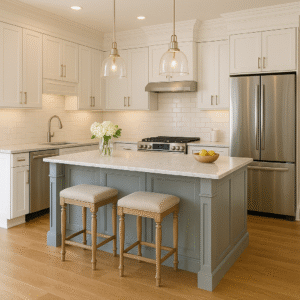
Labor costs can vary significantly depending on the complexity of your kitchen renovation and the specific tasks involved. Contractor fees may include project management, demolition, coordination of subcontractors, and overall supervision. It’s essential to obtain multiple quotes from reputable contractors and discuss the scope of work in detail to ensure transparency and accuracy.
Plumbing and electrical labor costs will depend on the complexity of the necessary installations and the extent of any modifications required. Hiring licensed professionals is crucial to ensure that the plumbing and electrical work is done safely and up to code.
Carpentry and installation labor costs will depend on the specific tasks involved, such as cabinet installation, countertop fitting, and trim work. Hiring experienced carpenters and installers will ensure that your kitchen elements are installed correctly and efficiently.
In conclusion, a kitchen renovation involves various components, each contributing to the overall functionality and design of the space. Cabinets and countertops, appliances, flooring, lighting, plumbing fixtures, backsplash, ventilation, electrical work, painting and finishing, and labor costs all incur expenses. By carefully considering your preferences, budget, and long-term goals, you can create a beautiful and functional kitchen that meets all your needs. Remember, it is important to hire experienced professionals for installation and perform proper maintenance to ensure the longevity of your kitchen investment.


